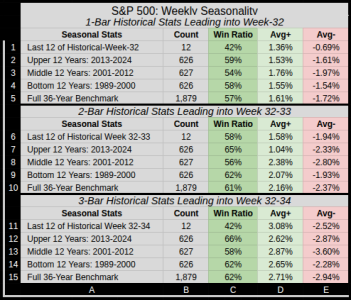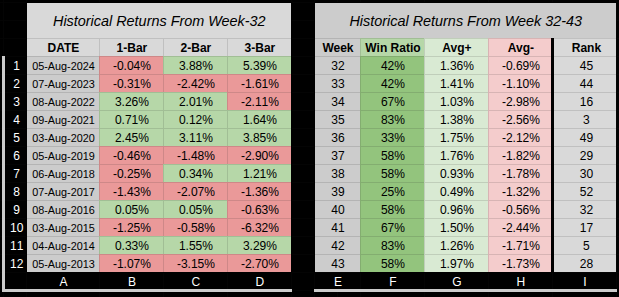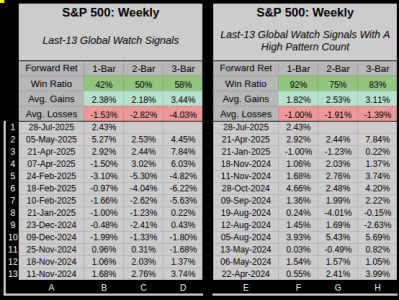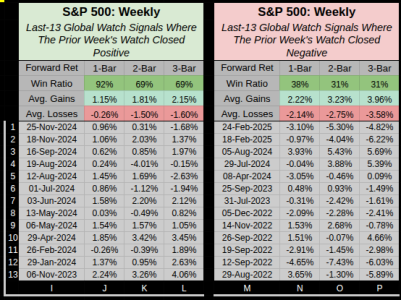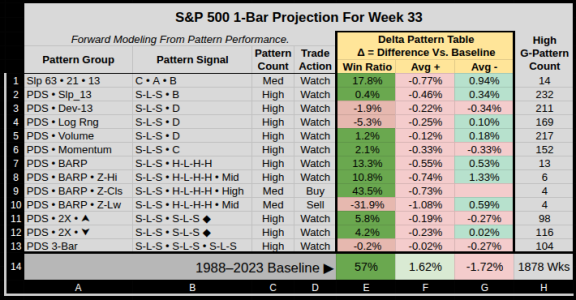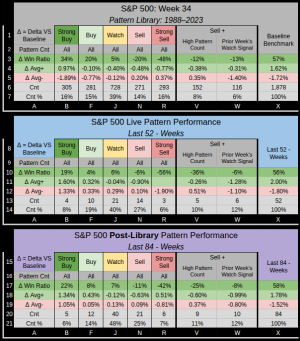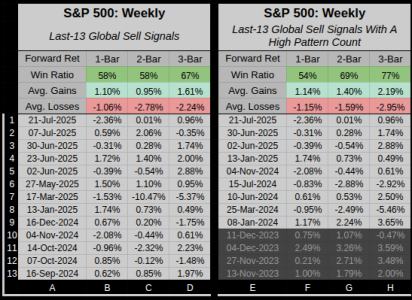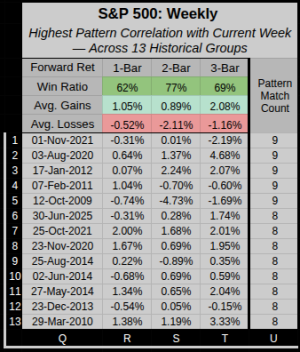JTH
TSP Legend
- Reaction score
- 854
I'm currently suffering from a form of Information Presentation Paralysis.
Core Message:
At face Value, Week-32 has generated a Global Watch Signal which is designed to encompass the middle 40% of all signals.
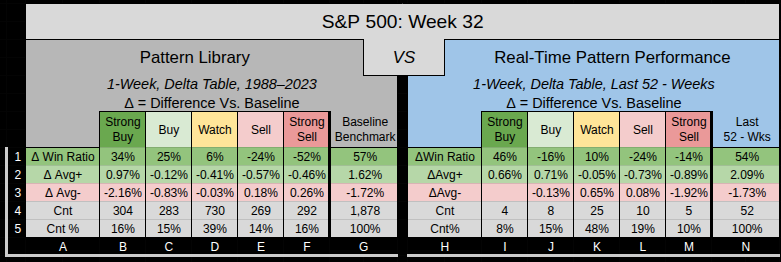
12-Year Stats
Seasonality shows a downside bias for both Week 32 & 33.
From each Chart Row-1 Column-C. Over the previous 12-years, our 1-3 Week Win Ratio is 42%, 58%. 42%
12-Year Stats
Left Chart: Over the past 2 years, Week-32 showed minor losses, with further downside escalation for the 2 & 3 bar performance.
Right Chart: Week-32 ranks 45th of 52, followed by Week-33 ranking 44th of 52.
That's it, we should have an exciting week if we can maintain some volatility...
Core Message:
- At present a Global Watch Signal has a 66.7% directional alignment between the most recent 52-weeks and long-term pattern behavior
- Pattern metrics favor an upside bias with a weighted win ratio of 62.6%
- Seasonality is weak, the next 3 weeks are in the bottom 14th percentile
At face Value, Week-32 has generated a Global Watch Signal which is designed to encompass the middle 40% of all signals.
- Pattern Library displays a 6% edge over the 57% Benchmark Win Ratio.
- Last 52-Weeks display a 10% edge over the 54% Benchmark Win Ratio.
- We have a High 39% Pattern Count, which is in the upper 33rd percentile.
- Last-13 Global Watch with a High Pattern Count have a 69% Win Ratio
- Average Gains outpaced losses 1.99% vs -1.22%
- The Prior Week-31 was a Global Sell Signal which closed down -2.36%
- The Last-13 Global Watch with a prior Sell have a 31% Win Ratio
- Losses outpaced gains -1.34% to 1.02%
- The Last-13 Global Watch with a prior Sell that closed down have a 62% Win Ratio
- Gains outpaced losses, 2.10% to -1.21%
- The Last-13 Global Watch with a prior Sell have a 31% Win Ratio

12-Year Stats
Seasonality shows a downside bias for both Week 32 & 33.
From each Chart Row-1 Column-C. Over the previous 12-years, our 1-3 Week Win Ratio is 42%, 58%. 42%
12-Year Stats
Left Chart: Over the past 2 years, Week-32 showed minor losses, with further downside escalation for the 2 & 3 bar performance.
Right Chart: Week-32 ranks 45th of 52, followed by Week-33 ranking 44th of 52.
That's it, we should have an exciting week if we can maintain some volatility...
Last edited:


